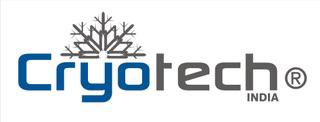FAQ’S
1. At present we are using SAGE vitrification medium . Why is Cryotech better?
Here are some unique advantages of the new Cryotec system over ALL other existing systems of Vitrification, including Sage:
* The solutions are improved with optimum viscosity to facilitate vitrification and warming.
* The solutions are stable for a year at 4-8c and stable for three months at RT.
* Trehalose has been used instead of Sucrose to eliminate the problem of endotoxins.
* The universal protocol for oocytes, embryos and blastocysts makes the method very easy for the embryologists.
* The new vitri and warm plates do not have any blind space in the wells, so its impossible to lose embryos/oocytes during washing.
* The plates have a Cryotec holder, so it has the same focus during loading and washing. The Cryotec has a long and wide handle, it has a big Cryotec mark for quick identification of the right side.
All these points add up and cumulatively aid in achieving 100% survival.
2. Our embryos are now frozen with the SAGE medium. When we thaw them using your Thaw Kit, will this have an adverse effect on their survival ?
Nobody can give a 100% correct answer to this question, as the exact composition of most commercially available vitrification and warming media remains unknown. There are no extensive cross-examination studies done using all available vitrification and warming kits with human oocytes and embryos. But, in practice, we must remember the fact that warming methods are rather uniform. Since the warming media do not contain any intracellular cryoprotectant but only sucrose, any brand can be used for warming without any problem whatsoever, irrespective of the vitrifying solutions used.
Now with frequent cross-border cryoshipping of oocytes and embryos, many scientists have experienced equal success with embryos/oocytes vitrified using solutions of one brand, and warmed using another.
3. What is the proper size of pipettes?
We recommend to use a pipette which inner diameter meets the diameter of the oocyte/embryo.
140-150 µm for oocyte and cleavage stage embryo.
160-200 µm for blastocyst
4. Is it possible to use the solutions in drops?
For best results you must adhere to the protocol. By using Vitri Plate and Warm Plate, you will minimize the stress on oocytes/embryos and will be able to achieve the good results.
5. For how long should the solutions be incubated before usage?
The Vitrification Solutions must be tempered to 25-27°C atleast 1 hour before using.
The Warm plate and TS vial should be incubated at 37°C atleast 3 hrs before use (overnight incubation recommended). DS and WS must be tempered to 25-27°C atleast 1 hour before using.
6. Should I do the vitrification process at RT or 37°C?
The vitrification and warming process is to be done at RT.
7. When should I vitrify the oocytes after denuding?
Ideally 1 hour after denuding.
9. Is it necessary to collapse or shrink Blastocysts before the Vitrification procedure?
It is not necessary to collapse or shrink blastocysts. Best timing for vitrication of blastocyst is when their size (diameter) is between 160-220µm for perfect survival after vitrification.
10. Can the same solution set be reused? If yes how many times?
For vitrification, the solutions can be used 3 to 4 times, provided there is minimal transfer of solutions from one well to another. So, this really depends on the efficiency of the embryologist, in terms of handling and quickness. You will set your own limits as you move along the learning curve. For warming, it is recommended to use the solutions only once, since we transfer considerable volume of TS into DS, and DS into WS.
11. How many oocytes/embryos can I load on one Cryotec?
Maximum three cleavage stage embryos or oocytes can be loaded on cryotec. For blastocyst we recommend maximum of two.
12. Can we reuse the Cryotec after thawing?
No
13. Once the oocytes are warmed, how long should we wait before doing ICSI?
Post warming wait for 2 hrs before microinjection (ICSI).
14. What is the best time to do the embryo transfer after warming the embryos?
Day 2 and Day 3 embryo transfer can be done immediately after warming. In case of blastocyst , transfer should be done 2 hours after warming.
15. Do I need to perform assisted hatching on the warmed embryos before transfer.
Assisted Hatching is not required as vitrification does not lead to zona hardening.
16. Day 5 or Day 6? When should I vitrify the blastocyst?
Best timing for vitrication of blastocyst is when their size (diameter) is between 160-220µm for perfect survival after vitrification.
